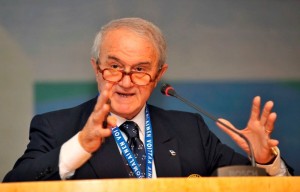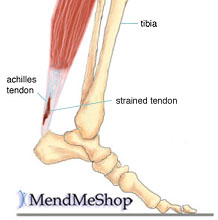I DO NOT TAKE RESPONSIBILITY FOR THIS, I DO NOT CONDONE THIS. IF YOU DO THIS YOU WILL PROBABLY DIE. But- I had to share this.
Thanks to Samantha Sendel from Canada for letting me post this.
I DO NOT TAKE RESPONSIBILITY FOR THIS, I DO NOT CONDONE THIS. IF YOU DO THIS YOU WILL PROBABLY DIE. But- I had to share this.
Thanks to Samantha Sendel from Canada for letting me post this.
Thanks for another posting from Yin Alvarez.
Charles Tamayo preparing for 2011 Valerie Liukin Invitational
Have a routine you want to post? SHARE
 He will solicit votes from the 130 national affiliated federations for a fifth mandate.
He will solicit votes from the 130 national affiliated federations for a fifth mandate.
Bruno Grandi was first elected in August 1996 at the 70th Congress in Atlanta (USA). He succeeded Yuri Titov of Russia after a twenty-year reign.
When asked about his reasons for running, Prof. Grandi casts back to his age of seventy-seven, hoping to leverage his experience in sports to bring numerous projects to fruition. “This will be my last mandate!” announced the President, with a nod to the international gymnastics community. “But before I take my leave, there are several issues that need my attention, and I am committed to finishing what I started.”
According to statute, candidates for the 2012 elections must file for office at the FIG Secretariat by May 21, 2012 midnight, at the latest.
LETTER FROM BRUNO GRANDI
LAUSANNE (SUI), FIG Office, December 2, 2011:
Friends,
I have decided to run for re-election at the FIG General Assembly in Cancun (MEX), October 25 – 27, 2012. I will solicit the votes of the 130 national affiliated federation delegates for a fifth mandate.
My decision is the product of long consideration. A fifth term is the logical continuation of a mandate that the Atlanta Congress first issued to me in 1996 when I succeeded Yuri Titov after a twenty-year reign. Historians will remember that he and I ran against one another in the memorable elections of 1992 in Salou (ESP), in which my friend Titov reclaimed office by a single vote!
It is no mystery that I am getting along in years. At the age of seventy-seven, I hope to leverage my experience in sports to bring numerous projects to fruition. This will be my last mandate. But before I take my leave, there are several issues that need my attention, and I am committed to finishing what I started. I am both pugnacious and consistent.
Among the issues at hand is the debate surrounding eligibility to be part of the technical authorities; members must be in possession of a category I or II judge and level III coach brevet as of 2013. It is my responsibility to provide our sport and our gymnasts with individuals who are both trained and competent. It is a credibility issue. Other topics include development, solidarity and promotion of gymnasts in underprivileged countries. Gymnastics cannot fall into the trap of catering to wealthy countries. We must reach higher, we must strive for universality. Such is the Olympic ideal, and the justice I hold dear.
But the most ambitious project by far is that of competition reform within the Marketing project. Our product needs to be streamlined; and to keep our competitions attractive for sponsors and the public, it has been found imperative to review our Codes of Points.
Since the day I first took office I have laboured toward attracting more attention to our sport. Gymnastics needs to simplify the rules, give a face lift to its formats and speak in terms that Generation Y can understand. This is imperative. My experience has taught me that success is a passing thing and that what we achieve today must be pursued tomorrow; fundamental truth!
With these things completed, I will be able to hand the keys of the FIG over to my successor knowing that I have finished the job.
With my warmest wishes for an excellent New Year 2012,
FEDERATION INTERNATIONALE DE GYMNASTIQUE
Prof Bruno Grandi, President
Edward Mesa Pommel Routine. Submitted by the ever enthusiastic Yin Alvarez.
Do you have something you want to share? SHARE
“When your work speaks for itself, don’t interrupt” Industrialist, Henry J Kaiser
“I’m tired of all this nonsense about beauty is only skin deep. That’s deep enough. What do you want, an adorable pancreas?” Author, Jean Kerr.
“Progress isn’t made by early risers. It’s made by lazy men trying to find easier ways to do something” Author, Robert Heinlein
“Gratitude is a quality similar to electricity: It must be discharged and used up in order to exist at all” William Faulkner
“God may have had fun at creation, but he didn’t really think things through.” Filmmaker, Lars von Trier
“You can’t pepper spray an idea any more than you can punch a dream” Lee Camp
“98% of the kids are good, How come we only hear about the bad 2%?” My son
“When you want to win a game, you have to teach. When you lose a game you have to learn.” Tom Landry
“Pepper spray is not a seasoning” Tony Retrosi
Just something fun for today! Thanks to Greg Marsden at the University of Utah for sharing this on youtube.
Have a team you want to high light? Done be afraid! Keep the momentum going and SHARE.
Gina Paulhus, CPT and Owner, Home Bodies Fitness Training
As coaches we are always worried about our athlete’s conditioning program. We need to make sure our athletes’ bodies are physically prepared for the demands of gymnastics. When is the last time you thought about if YOUR body is prepared to coach?
Think about it–the demands include: spotting, moving mats (hopefully you have trained your kids to move the mats!!), long hours on your feet and with your body in less than ideal positions. Coaches have a dominant side which can throw the body out of whack over time. Then there is the stamina required of being the only coach at a meet with kids in four separate squads…
Here are 5 simple tips you can use when thinking about your own workout. You ARE working out, RIGHT??
1. For strength training, choose dumbbells over machines and barbells.
Dumbbells prevent your stronger side from ‘taking over’ developing muscular balance in the body. A balanced body is less prone to injury.
2. Favor ‘interval training’ over steady cardio.
Interval training, where you vary your pace within a workout (such as jog, sprint, alternating, or jog, walk alternating) is more similar to the demands of your job. It is also more effective in helping with weight control. 20 minutes of intervals is worth 60 minutes of steady cardio.
3. Do some core.
I bet you know a billion core exercises for your gymnasts. Pick two for abdominals, two for your sides, and two for your back.
4. Work out before work.
You will not be able to put much into your training after a long day at the gym. If you have kids, try hitting the gym right after dropping them off at school. Don’t go home, you will find something else to do!
5. Stretch tight areas as priority.
Who has time to stretch for an hour? But everyone can find five to ten minutes to stretch your tightest areas. Hamstrings, hip flexors, chest, and back are typical culprits.
The glide kip is one of the most difficult skills we have to teach a beginner team gymnast. If you think about it, it probably takes less time to teach a double back than it takes to teach a kip.
I plan on devoting a much larger article on the glide kip but I wanted to share these drills first to encourage others to share their favorite drills! [Read more…]
-Brandi Smith-Young, PT, FAAOMPT, OCS. Perfect10.0 Physical Therapy
How To Avoid Tendon Rupture
All too often little aches in the tendon go treat with ice, stretching, and continued repetitive stresses of tumbling and vaulting. The newest studies out there now show there is no inflammatory response in tendon injuries. It is more of repetitive micro-tearing of the tendon which leads to rupture. This is no longer referred to as tendonitis but tendonopathy. This can be prevented with proper early intervention, physical therapy, and respect for the 11-12 week healing process for the tendon. Thus tumbling on the tumble track, decreasing landings and take-offs, and utilizing equipment advancements like sting mats, pits, and other absorbing equipment during the healing process is necessary. It is imperative that the cause of the tendon injury is addressed, whatever weakness or tightness is leading to abnormal stresses on the tendon. This is addressed with very specific physical therapy. If the cause of the tendonopathy is not addressed the injury will continue to return.

How can I tell it is a tendon injury verses a bone or joint?
The gymnast will point directly at the body of their tendon or on it’s insertion on the bone or growth plate in a growing athlete as the location of pain. This may be the patellar tendon, just at the bottom of the knee cap, at the insertion of the patellar tendon on the tibia, the achilles tendon, or the insertion of the achilles tendon on the heel. These are the two most likely tendons injured in gymnast. Many times Severe’s Disease, Osgood Schlatter’s disease, Sinding Larsen Johansson’s disease or jumper’s knee are missed diagnosed when it may be a tendon injury or the tendon may be involved in the diagnosis.
What are the signs my gymnast is getting a tendon injury or progressing toward rupture?
What can I do as a coach to prevent the progression?
When a gymnast complains of tendon pain and is in the early stages this is the time to get the athlete in to see a good physical therapist. We will need to start the tendon training process and address the issues which have contributed to the tendon injury in the first place. In many cases it is a loading issue. The athlete is landing or jumping with poor technique or lots of compensations. Many times this is after the athlete has grown in the last year and the muscles are imbalanced. Some muscles are too tight and week while others are flexible and strong. In some cases the athlete developed compensatory movement patterns when increasing skill level and/or intensity of training. These compensations will need to be addressed along with tendon training. Tendon training involves low loading lots of repetitions (40-60% 1 repetition max, sets of 100-200 slow repetitions many times in a day). This means lots of biking, eliptical, painfree active range of motion, and minimal loading for up to 11-12 weeks. The sooner the injury is caught the faster the recovery. The stage of injury the athlete is in will dictate the amount rest from high impact activities (ie tumbling, vault, and possibly some beam tumbling or dismounts) needed. The painfree principle applies. The athlete cannot have pain while doing anything. Pain is a sign of continued microtearing and will lead to rupture. Rehab post-surgical repair of a rupture is 6-8 months and even up to 1 year to return to high level impacts and performance. As frustrating as 11-12 weeks can be the wait is worth it compared to the alternative. With proper strength and flexibility training specific to each athlete and proper tendon training your athlete will be back on track.
Look for exercises to come to help prevent tendon injuries by a proper stretching regimen and improving muscle function to promote proper jump and landing mechanics.
See the link below for presentation on tendonopathy leading to tendon rupture.
THANKS TO JEFF GRABA FROM AUBURN UNIVERSITY FOR LETTING ME POST THESE.
These are all up on his Facebook Page